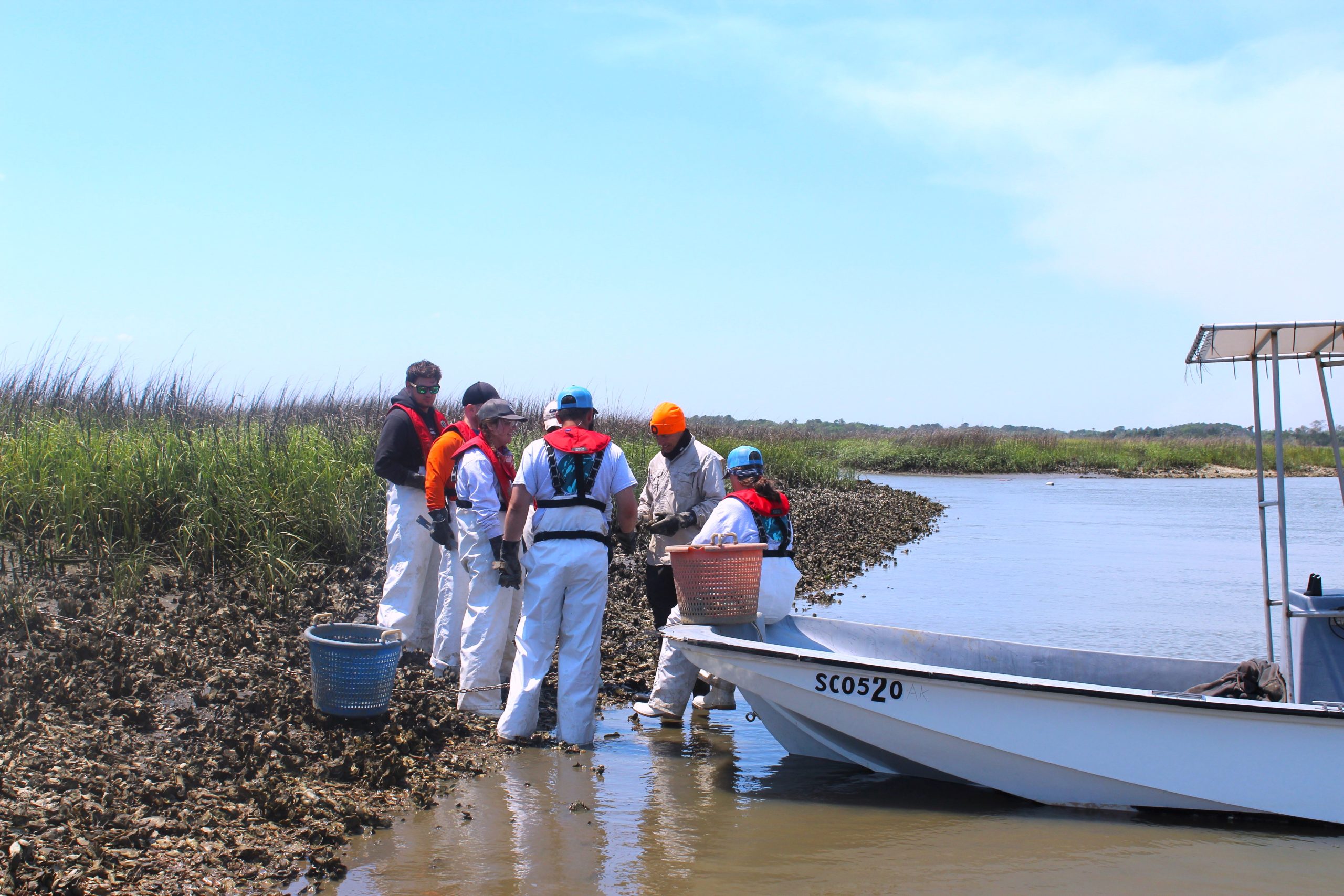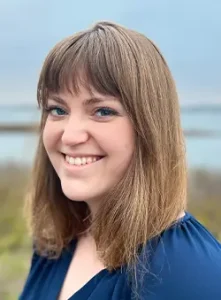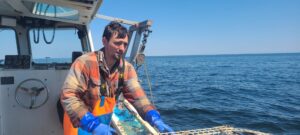Our skiff picks up speed on the Intracoastal Waterway, accelerating out of view of the docks of McClellanville, South Carolina, into the unbroken salt marsh landscape. Jack Spahr keeps both feet firmly grounded as he navigates these waterways, familiar enough to him after nine months of this commute as a full-time waterman working alongside his uncle, Captain Jeff Spahr. He laughs easily with Garrett Kestory, one of the lucky six selected out of 59 applicants to participate in the inaugural class of the S.C. Sea Grant Consortium’s (Consortium) month-long Commercial Seafood Apprenticeship Program (CSAP).
After two weeks of marine navigation lessons, knot-tying, small engine repair, CPR, First Aid and automated external defibrillator certification, a U.S. Coast Guard Drill Conductor certification, and emergency water evacuation training, everyone is glad to be on the cool water. With recreational fishing licenses in hand, we are ready to be immersed in the art of wild oyster harvesting.

The Consortium has worked with the Town of McClellanville since 2016 on the “Preserving McClellanville’s Working Waterfront Initiative.” The initiative identified key needs for the long-term sustainability of its working waterfront, including a model for training the next generation of commercial fishers. Here’s where CSAP comes in, and it’s just in time.
“Across the board, people in the commercial fishing industry are worried about the future,” says the Consortium’s Commercial Seafood Apprenticeship Program Coordinator Angela Treptow. “It’s getting harder and harder to find qualified, reliable people who want to work in the industry, especially young people.”
This phenomenon, called the “Graying of the Fleet,” is not just a concern in South Carolina. Alaska Sea Grant researcher Courtney Carothers found that “the average age of fishermen in Alaska’s fisheries has increased by 10 years over the past generation, and overall rural communities have lost 30% of their local permit holders.” Similar trends have arced across the U.S., causing concern everywhere from Maine to Florida.
“I think this program is going to help the next generation see commercial fishing and mariculture farming as a viable career opportunity,” says Angela Treptow.
This story was also featured in National Fisherman Magazine.


Hailey Murphy
Coastal Public Information Coordinator
South Carolina Sea Grant Consortium


